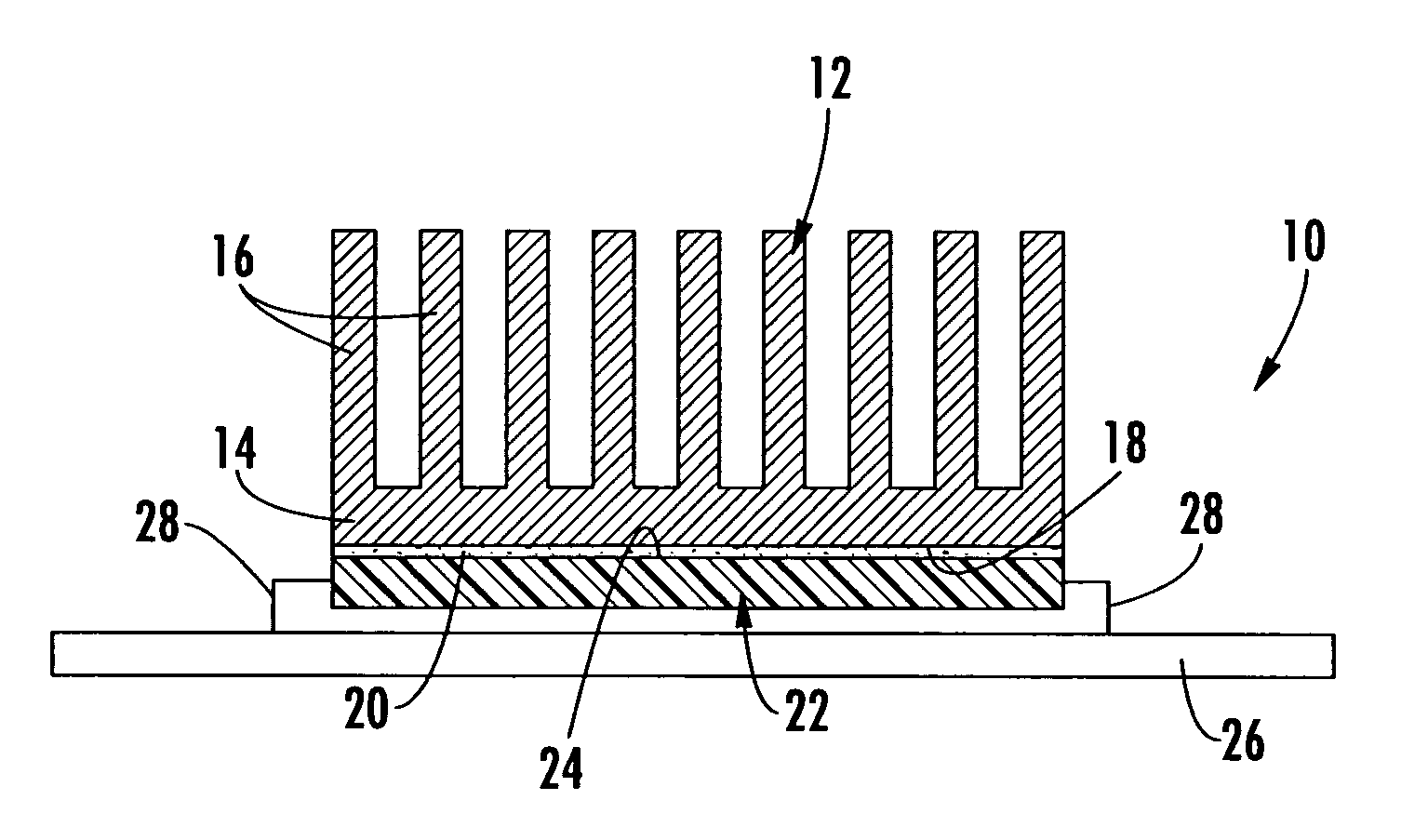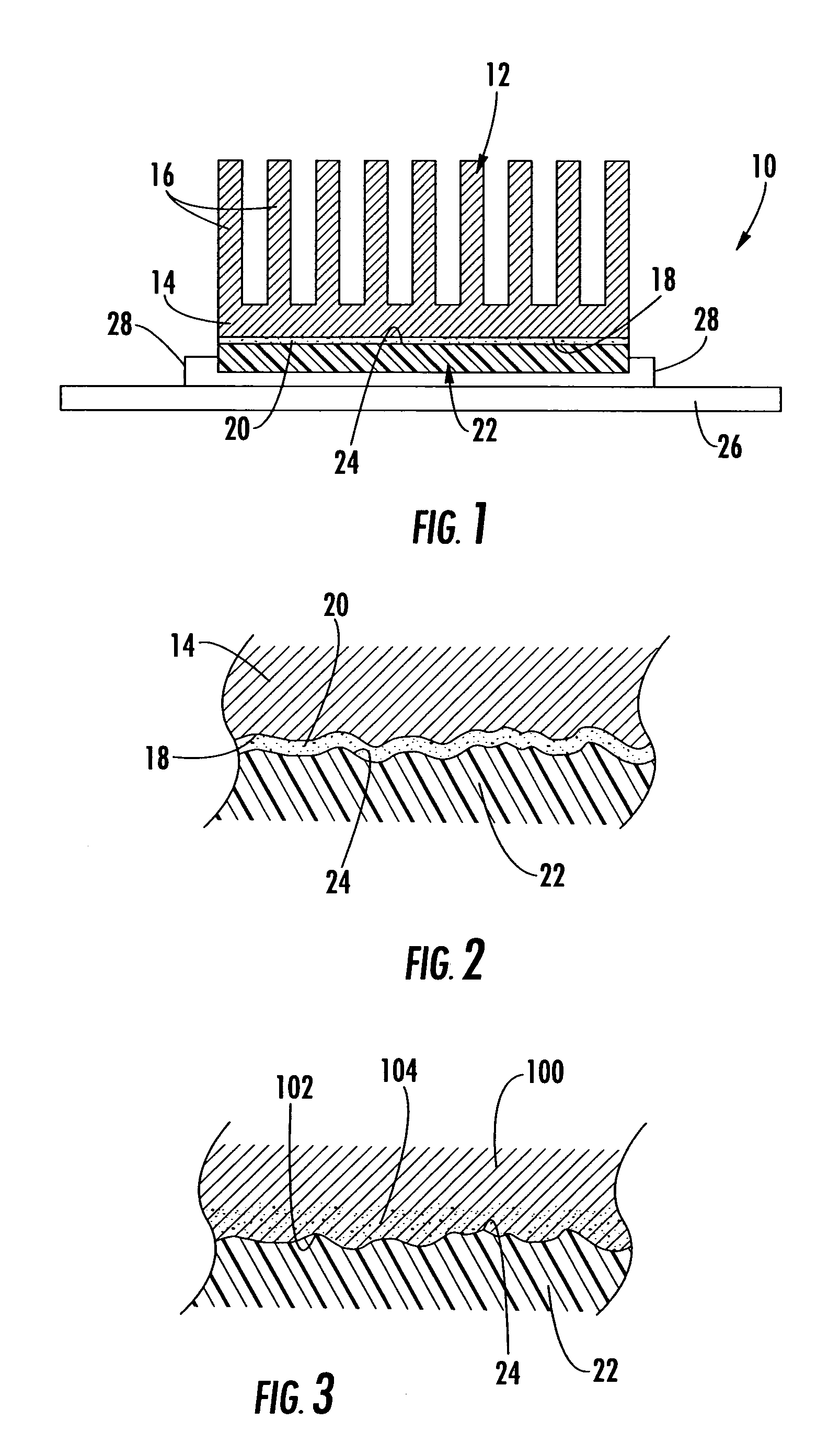Elastomeric heat sink with a pressure sensitive adhesive backing
- Summary
- Abstract
- Description
- Claims
- Application Information
AI Technical Summary
Benefits of technology
Problems solved by technology
Method used
Image
Examples
Embodiment Construction
[0026]Referring now to the drawings, the heat dissipation assembly of the present invention is shown and illustrated generally as 10. The present invention is a heat dissipation assembly 10 and a method by which that assembly, formed by combining an elastomeric polymer base matrix and a thermally conductive filler, is molded into a finished component for final installation onto a heat generating electronic device.
[0027]The assembly 10 of the present invention is shown here, by way of example, as a heat sink device 12 having a base element 14, integrally formed surface area enhancements 16 and an interface surface 18 to which an adhesive layer 20 is applied. The heat sink device 12 is applied to a heat generating electronic device 22 that has a heat generating surface 24 and is typically installed onto an electronic circuit board 26 via wire leads 28. While specific structure is used here to illustrate the present invention, it would be understood by one skilled in the relevant art ...
PUM
| Property | Measurement | Unit |
|---|---|---|
| Thickness | aaaaa | aaaaa |
| Pressure | aaaaa | aaaaa |
| Flexibility | aaaaa | aaaaa |
Abstract
Description
Claims
Application Information
 Login to View More
Login to View More - R&D
- Intellectual Property
- Life Sciences
- Materials
- Tech Scout
- Unparalleled Data Quality
- Higher Quality Content
- 60% Fewer Hallucinations
Browse by: Latest US Patents, China's latest patents, Technical Efficacy Thesaurus, Application Domain, Technology Topic, Popular Technical Reports.
© 2025 PatSnap. All rights reserved.Legal|Privacy policy|Modern Slavery Act Transparency Statement|Sitemap|About US| Contact US: help@patsnap.com



